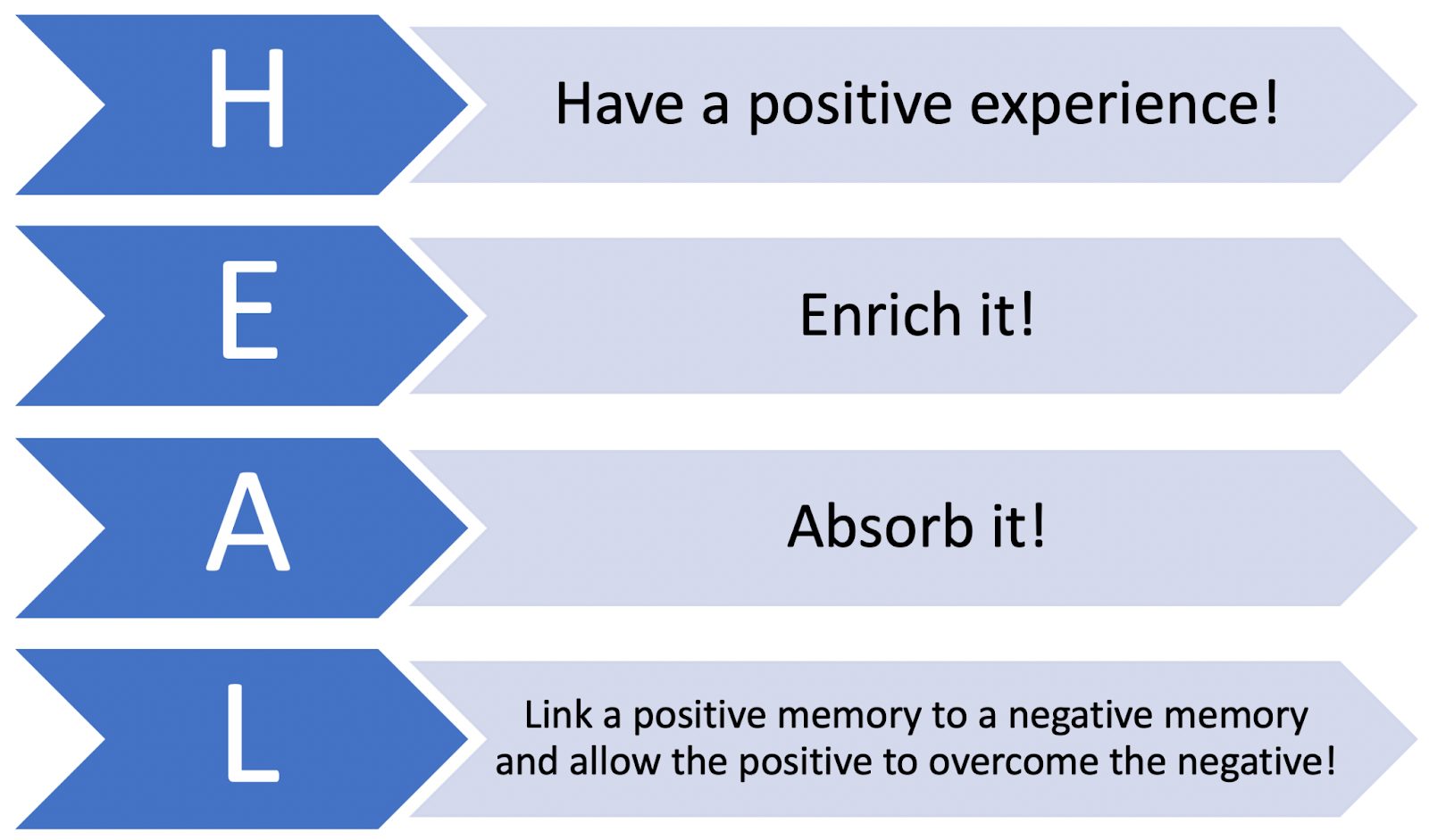
Intervention Overview
Rick Hanson (2013) found that by focusing on and taking in our good experiences, even just for about twelve seconds, rather than ignoring them, we can train our brains to be more positive. In other words, when we use the amplifying strategy of savoring, we can improve our positive emotions and outlook on life. Hanson shares a four step acronym, HEAL, that can help remind us to pause and enjoy good experiences and “heal” from negative ones. The steps are as follows:

This practice requires consistent, long term practice to be effective (Hanson, 2013). As you teach these steps to your students, consider having a HEAL moment daily or weekly in your classroom as well as encouraging students to continue practicing this savoring strategy outside of class.
Intervention Guide
| Grade Level: |
All |
| Materials: |
None |
| Duration: |
3-5 minutes daily, or as needed. |
| Implementation: |
1. Have students think about a positive experience they have had recently, or reflect on someone who cares about them.
2. Have students focus upon that memory for a few seconds and draw their attention to what it makes them feel.
3. Encourage students to absorb those positive feelings and continue reflecting upon the positive experience.
4. Finally, have students use those positive feelings to reflect upon a negative experience and to let the positive experience soothe some of the remaining hurt or negative feelings they may have.
|
Does it work?
Jacob and de Guzman (2016) assessed the impact of the “taking in the good,” or “HEAL,” process developed by Rick Hanson on the depression levels of adolescent female students in the Philippines. Over the course of 6 weeks, 30 female students ages 13 to 16 participated in 90-minute lessons discussing principles of the “taking in the good” exercise in conjunction with bibliotherapy. Not only did depression levels fall among students participating in the intervention, but the students also reported improved self-esteem and a better ability to overcome feelings of worthlessness and hopelessness (Jacob & de Guzman, 2016).
References:
Hanson, R. (2013) Hardwiring happiness: The new brain science of contentment, calm and confidence. Harmony Books.
Jacob, J. & de Guzman, R. G. (2016). Effectiveness of taking in the good based- bibliotherapy intervention program among depressed Filipino female adolescents. Asian Journal of Psychiatry, 23, 99-107. https://doi.org/10.1016/j.ajp.2016.07.011